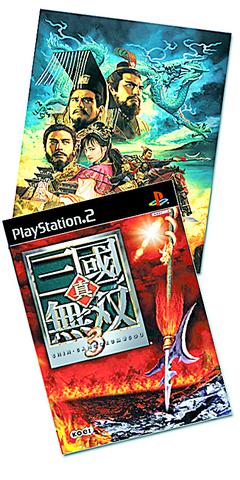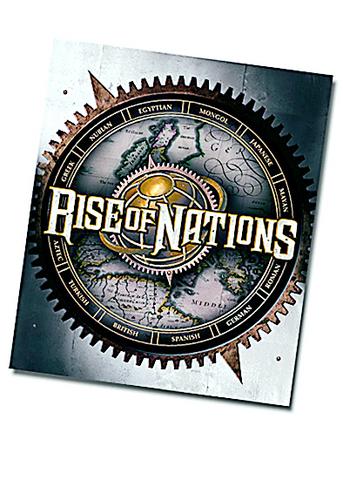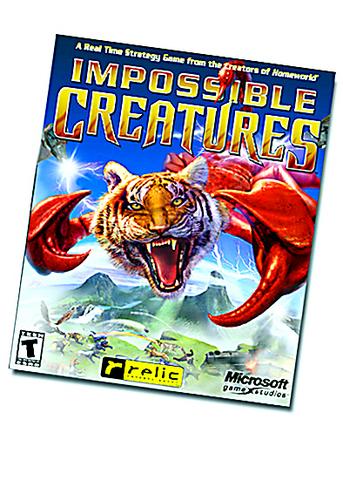Romance of the Three Kingdoms IX (三國誌九)
Sin Sangokumusou 3
(真三國無雙三)

Developer: Koei (Japan)
Domestic distributor: Taiwan Koei Entertainment Software
Language: Chinese

Release Date: PC (late March), PS2 (currently available)
The chaotic Three Kingdoms period, which followed the Later Han dynasty and lasted until the fourth century, is the setting for several games, among which are Romance of the Three Kingdoms and Sin Sangokumusou, both developed by Koei.
In the Romance of the Three Kingdoms series the player needs to organize infrastructure, manage resources, develop the army, and finally unite China by conquering his or her enemies.

The Sin Sangokumusou series uses an action game format and was developed for Play Station 2 (PS2). The player picks a heroic figure from the historical epic Romance of the Three Kingdoms, who then leads the army to fight the enemy, conquer territories and unify China.
The biggest change in the ninth edition of Romance of the Three Kingdoms is that the player plays a feudal baron, instead of a military officer, whose abilities he needs to develop. This is strategic rather than tactical, and the mode has shifted from turn-based play to real-time strategy (RTS).
"This is in line with gaming trends. The old turn-based system was good for single players playing against a computer. Now, games are harnessing the power of the Internet, and things happen much more quickly," said Sammy Liu (

The third edition of the Sin Sangokumusou series was released at the end of February. What makes this game different is that players can switch characters during the course of the game.
"The best part of the game is that it offers the player a chance for wild killing, so as to release the accumulated pressure from a long day's work," said Liu.
Splinter Cell: Stealth Action Redefined
Publisher: Ubi Soft Entertainment (USA)
Domestic distributor: Unalis Corporation
Language: English
Platform: PC, XBOX
Release Date: currently available
Splinter Cell is the latest game from the series based on the work of best-selling author Tom Clancy by Ubi Soft Entertainment. In a game world that seems almost real, the player assumes the role of Sam Fisher, an outstanding intelligence agent of a secret national security organization. He or she will then be sent to out on a series of dangerous missions.
The story starts in 2003 when the American National Security Agency establishes a secret squad, code-named Third Echelon, which handles the most advanced technologies but whose existence is denied by the US government.
On March 10, 2004, two CIA special agents go missing while on a secret mission in Georgia. Fisher is summoned to find them.
The player is set to go through 24 levels in four countries -- Myanmar, the US, Georgia and Russia -- undertaking 11 missions, which include sneaking into a military's headquarters to steal information, destroy papers and eliminate the enemy.
"Since it is named `stealth action,' the player certainly needs to operate in secret and killing is not the only choice when encountering an enemy," said Chuang Cheng-han (
Impossible Creatures
Publisher: Microsoft (USA)
Domestic Distributor: Microsoft Taiwan
Language: English
Platform: PC
Release Date: currently available
Every year hundreds of RTS games come onto the market, but only a few are able to attract a sizeable audience. In one of the more innovative of these, Microsoft's Impossible Creatures, the main character is a geneticist who reassembles the bodies of real creatures and breeds new kinds of animals. The animal Frankensteins created by the scientist are then sent to do battle with evil monsters.
"The concept of the game may have come from Pikachu," said Vincent Huang (
Impossible Creatures has a 3D graphic interface and offers 50 species for the player to reassemble.
"There is no standard for the player to follow, so their is plenty of room for creativity, but at the same time, players must test the effectiveness of different designs for themselves," Huang said. "We want to see how game players in Taiwan respond to this high level of creative freedom in online games."
Rise of Nations
Publisher: Microsoft (USA)
Domestic Distributor: Microsoft Taiwan
Language: English, Chinese
Platform: PC
Release Date: May
To cater to the increasingly jaded appetites of PC gamers, RTS games are adding more and more features drawn from other game formats. Rise of Nations is a combination of Microsoft's Age of Mythology and the Civilization series which offers the player the satisfaction of conquest and construction.
The designer of the game, Brian Reynolds, was one of 25 "Game Gods," selected by PC Gamer magazine. He was the main developer of several turn-based strategy games, such as Civilization II, Colonization and Alpha Centauri. Reynolds established Big Huge Games with three other game developers and started work with Microsoft in February 2000.
Reynolds said he wanted to combine RTS with turn-based strategy games to create a new kind of RTS, but emphasized that he was not trying to create a new kind of game, but simply wanted to underline the importance of constructive behavior in the game, not just killing and conquest.
"I hope that everyone can learn about `construction' and `growth,' look at the big picture, such as the development of social system and culture, to extend his or her power within the game," said Reynolds.
Role playing is one of the game's cross-over features, with heroes from a total of 18 civilizations who give the player an added dimension of fun when planning military strategies or constructing a city. Another feature that injects a does of realism is the use of a real-world map, which means that the player has to plan wisely in order to avoid fighting on too many fronts.
"In general, the old RTS games, such as Age of Mythology, are very cool, but our new games are more profound and strategic," Reynolds added.

June 2 to June 8 Taiwan’s woodcutters believe that if they see even one speck of red in their cooked rice, no matter how small, an accident is going to happen. Peng Chin-tian (彭錦田) swears that this has proven to be true at every stop during his decades-long career in the logging industry. Along with mining, timber harvesting was once considered the most dangerous profession in Taiwan. Not only were mishaps common during all stages of processing, it was difficult to transport the injured to get medical treatment. Many died during the arduous journey. Peng recounts some of his accidents in

“Why does Taiwan identity decline?”a group of researchers lead by University of Nevada political scientist Austin Wang (王宏恩) asked in a recent paper. After all, it is not difficult to explain the rise in Taiwanese identity after the early 1990s. But no model predicted its decline during the 2016-2018 period, they say. After testing various alternative explanations, Wang et al argue that the fall-off in Taiwanese identity during that period is related to voter hedging based on the performance of the Democratic Progressive Party (DPP). Since the DPP is perceived as the guardian of Taiwan identity, when it performs well,

The Taiwan People’s Party (TPP) on May 18 held a rally in Taichung to mark the anniversary of President William Lai’s (賴清德) inauguration on May 20. The title of the rally could be loosely translated to “May 18 recall fraudulent goods” (518退貨ㄌㄨㄚˋ!). Unlike in English, where the terms are the same, “recall” (退貨) in this context refers to product recalls due to damaged, defective or fraudulent merchandise, not the political recalls (罷免) currently dominating the headlines. I attended the rally to determine if the impression was correct that the TPP under party Chairman Huang Kuo-Chang (黃國昌) had little of a

A short walk beneath the dense Amazon canopy, the forest abruptly opens up. Fallen logs are rotting, the trees grow sparser and the temperature rises in places sunlight hits the ground. This is what 24 years of severe drought looks like in the world’s largest rainforest. But this patch of degraded forest, about the size of a soccer field, is a scientific experiment. Launched in 2000 by Brazilian and British scientists, Esecaflor — short for “Forest Drought Study Project” in Portuguese — set out to simulate a future in which the changing climate could deplete the Amazon of rainfall. It is